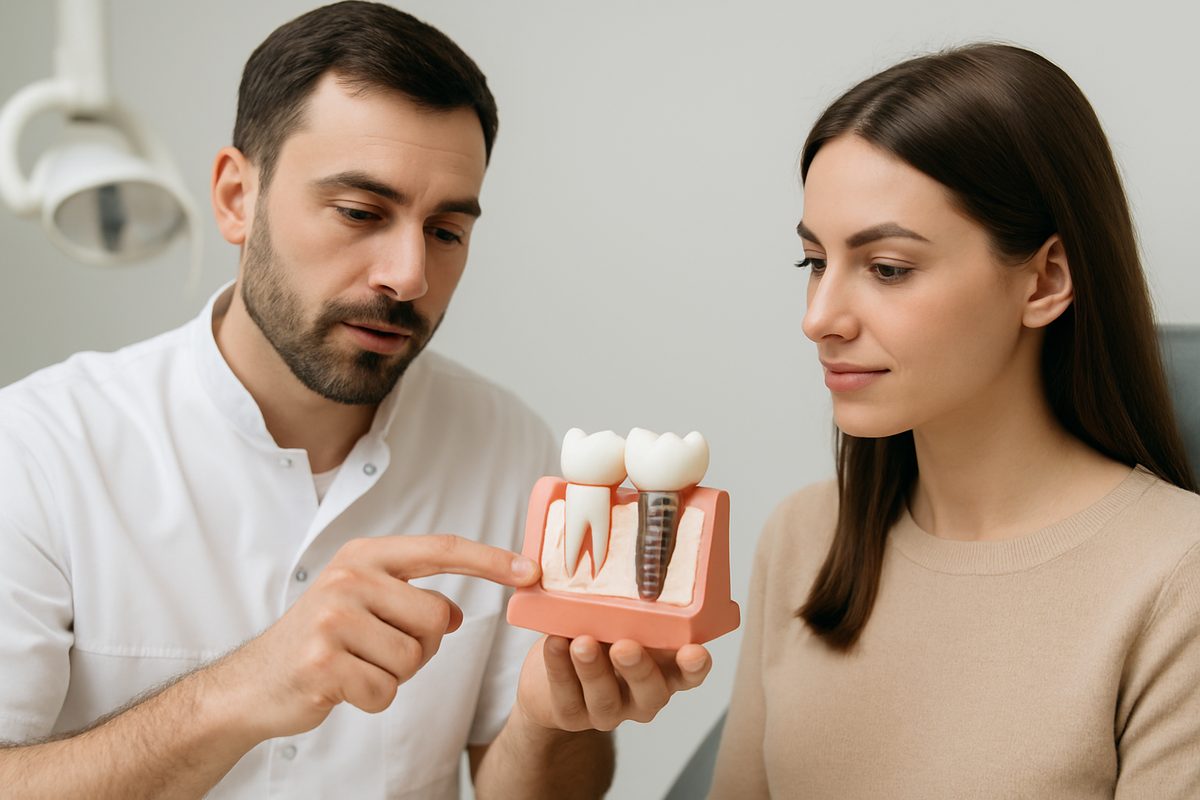Dental Blog - Concord, NC
Tips, Facts, And The
Latest In Dentistry

Bone Grafting For Dental Implants: Is It Always Needed?

Bone grafting for dental implants is a common question for patients planning implant treatment. This article explains when grafts are needed, the main types, what recovery looks like, alternatives, risks, cost and timeline, and how to decide if you need bone grafting for dental implants in Concord, North Carolina. Read on to learn practical steps to get an answer for your mouth.
What is bone grafting for dental implants?
Bone grafting for dental implants is a surgical procedure that adds bone or bone-like material where the jaw is too thin or short. The goal is to restore bone volume so an implant can be stable and long-lasting. Adequate bone prevents implant failure and keeps nearby teeth and tissues healthy.
How dentists decide if a bone graft is needed
Clinical exam and imaging
Dentists evaluate your mouth, bite, and gum health, then use x-rays and cone beam CT scans to measure bone height and width. Cone beam CT gives a 3D view so the dentist can plan precise implant placement and confirm if bone grafting for dental implants in Concord, North Carolina is necessary.
Factors that increase the chance of needing a graft
Missing a tooth for many years, severe gum disease, prior infections, trauma, or difficult extractions can cause bone loss. Smoking, uncontrolled diabetes, and some medications also raise the chance you’ll need bone grafting for dental implants.
Types of bone grafts
Autograft (your own bone)
Autografts use bone from your jaw or hip. Pros: highest success because it’s your tissue. Cons: adds a second surgical site and more recovery time.
Allograft (donor human bone)
Allografts come from screened human donors. They avoid extra surgery and are commonly used with good success rates. They act as a scaffold for your bone to grow into.
Xenograft & synthetic grafts
Xenografts (animal-source) and synthetic materials provide a durable scaffold. They reduce risks tied to donor tissue and are useful when large volume is needed.
What to expect during and after a bone graft
Grafting is usually done with local anesthesia and optional sedation. The dentist places graft material into the deficient area and closes the site with sutures. Healing often takes 3–6 months. You’ll get antibiotics, pain control, and instructions like soft diet, oral hygiene tips, and follow-up imaging to track healing.
Risks, success rates, and signs a graft is working
Risks include infection, swelling, and rare graft failure. Most grafts integrate successfully—studies show high success when done and cared for properly. Signs it’s working: reduced pain after first week, steady healing on x-rays, and stable bone volume on follow-up scans before implant placement.
Alternatives to bone grafting for implants
Alternatives that may avoid grafts include short implants, angled implants that use existing bone, ridge expansion, or All‑On‑X full‑arch protocols. Your anatomy and goals determine if these options are suitable.
Cost and timeline considerations
Adding a graft increases treatment time and cost. Expect a separate fee for grafting and a several‑month wait before implant placement to allow healing. Discuss sequencing and payment or financing options before you start.
How Rogers Clark & Associates approaches bone grafting for dental implants
Rogers Clark & Associates uses patient-first planning with CBCT imaging to assess bone needs and options. Dr. Rogers and Dr. Clark offer modern implant solutions, including All‑On‑X and titanium or zirconia restorations, and will explain whether bone grafting for dental implants in Concord, North Carolina is the best route for your case.
Next steps: How to find out if you need a bone graft
Schedule a consult with imaging and bring your dental history. Ask specific questions about bone grafting for dental implants in Concord, North Carolina, timelines, risks, and financing. A thorough exam and CBCT scan will give a clear plan so you can move forward with confidence.




